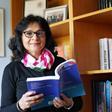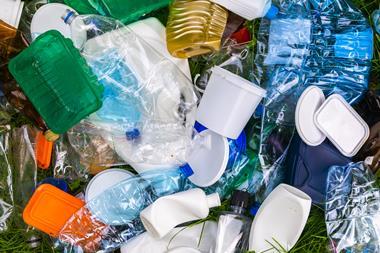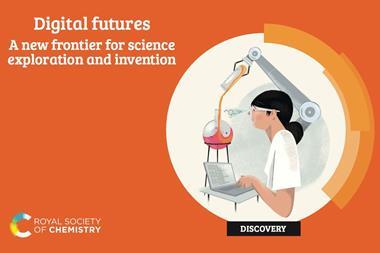Our sustainable polymers in liquid formulation (PLFs) task force is making great progress, and I’m excited to provide an update on the ambitious work we’ve been undertaking.
The group was established after our reports showed that an estimated 36 million tonnes of PLFs are made and sold each year – enough to fill Wembley Stadium 32 times over. As a group of thousands of different chemicals, PLFs are used as ingredients for specific functions – for example, they help paint stick to walls and hydrate your skin in moisturisers.
Despite their wide use and importance, the majority of polymer research, funding and collaboration is focused on plastics. The word ‘polymer’ has become synonymous with plastics. As a result, PLFs can essentially be considered the ‘forgotten’ group of polymers. When viewed as a group, thousands of different PLFs have common challenges and solutions. Our report highlighted the particular importance of investing in efforts such as collecting waste streams, recycling, developing more sustainable manufacturing methods, and finding robust alternatives to fossil fuel feedstocks.
What is the purpose of our task force?
The Sustainable PLFs Task force is a multi-sector group comprising representatives from across the value chain, from producers and formulators to waste disposal. Its purpose is ‘To provide leadership in creating a collaborative and joined-up strategy leading to a step change in innovation towards sustainable PLFs.’ But how do you even begin to achieve such a wide-ranging goal?
Bringing technical experts from across the value chain in the room was a momentous first step – but we then needed to choose an approach to enable lasting change. In order to do this, we teamed up with Rowan Conway – strategic designer, multi-stakeholder collaboration specialist and visiting professor of strategic design at University College London, UK. With Conway, we are progressing via a mission methodology based on strategic design methods used around the world to drive transformation – including those piloted in innovation agencies in Sweden and Denmark. The methodology incorporates elements from many perspectives and disciplines, but uses a set of guiding strategic design principles and practices to develop promising pathways to a mission oriented innovation portfolio for sustainable PLFs.

The process is a series of design workshops – or Mission Labs – where we work with the task force to codesign missions, explore innovation pathways and develop an innovation portfolio which can be tested over time. Between labs, we are focused on growing innovation networks and drawing in additional stakeholder research.
Why are we using a mission-oriented methodology?
We are working with missions because they enable us to co-design innovation policies oriented toward global challenges. Mission oriented innovation is a concept developed by a range of academics and economists, most notably Mariana Mazzucato, in her 2021 book Mission Economy. Mission-oriented innovation policies can be described as ‘big science deployed to meet big problems’: they seek to direct research and innovation towards societal needs such as environmental pollution, climate or social change.
Unlike ‘innovation as usual’, which focuses on growing distinct sectors through the deployment and commercialisation of science and technology, missions look at broader environmental and social concerns and shift the focus of innovation for the sake of innovation onto global challenges.
Mission-oriented innovation navigates the space between the rhetoric of grand challenges and the practical action of projects
Missions are characterised as ‘ambitious, exploratory, and ground-breaking in nature, often cross-disciplinary, targeting a concrete problem, with a large impact and a well-defined timeframe’. They are also dynamic: setting a bold direction from which a navigable route emerges. Mission roadmaps seek to ‘improve the coherence of innovation policies, and to create synergies between public, private and civil society initiatives and investments in high-impact mission-oriented innovations for the [UN sustainable development goals]’.
Our mission-based approach aims to engage a wide innovation network, catalyse funding and support for R&D into advanced materials, and to develop and test new processes in chemicals and materials. Ultimately, this methodology provides us with structure for designing and implementing roadmaps toward a robust innovation portfolio.
How will we apply this in practice?
Our goal is to move from words to action over a ten-month period. As you would appreciate, this is a very complex task considering the complexity of the issues we are looking to tackle.
In the first 3 months, we focused on establishing a mandate for change and shared vocabulary to solidify common ground for collaboration. While our work has introduced the term ‘polymer in liquid formulation’ and identified key types of PLFs, we accepted that terminology is still evolving, and context is important. For instance – ‘sustainability’ can be interpreted in many ways, and so we needed to define what a ‘sustainable PLF’ is to better describe the scope of the challenge.
In producing a glossary of terms that was acceptable for all members of the task force, we are now able discuss specific mission areas we create innovation roadmaps. Currently, we expect that these will be focussed on biodegradability and circular economy infrastructure of PLFs, which will be underpinned by a systems-level roadmap.
We will define routes, key stakeholders, potential experiments and funding pathways. For our innovation roadmaps to be sustainable we must focus on both immediate action and building long term foundations that will strengthen over time.
The final Mission Lab in February 2023 will focus on ‘mobilisation’, where we will plan for the launch of our missions, develop a funding and stakeholder mobilisation plan, and define priority actions and a long-term plan for sustainable infrastructure.
We will be sure to keep you updated on further progress made throughout this unique project – but if you have any questions please do contact me on MasseyBrookerA@rsc.org. For more information about PLFs, our reports and the Sustainable PLFs Task Force visit rsc.li/plfs
















No comments yet